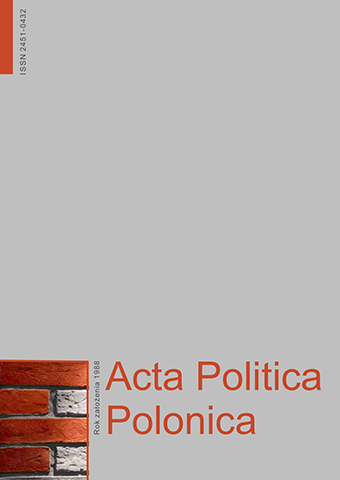
ISSN: 2451-0432
OAI
DOI: 10.18276/ap.2017.41-02




Issue archive /
3/2017 (41)
Totalitarne wizje przebudowy stołecznych miast – casus Rzymu i Berlina
(Some totalitarian plans of rebuilding the capital cities – the case study of Rome and Berlin)
| Authors: |
Marek
Żyromski
Uniwersytet im. A. Mickiewicza w Poznaniu, Wydział Nauk Politycznych i Dziennikarstwa |
| Keywords: | Rome Berlin rebuilding Speer |
| Data publikacji całości: | 2017 |
| Page range: | 14 (17-30) |
Abstract
The main aim of the article is to present some plans of rebuilding of Rome and Berlin as an important element and mechanism of process of legitimizing the totalitarian political system (Italian fascism and German nazizm). The process of rebuilding of Rome started with the uncovering of some important monuments constructed in ancient times (for instance Ara Pacis Augustae or Colosseum). Thanks to creation of some new roads and streets (for instance via dell’Impero – modern Via dei Fori Imperiali or via della Conciliazione), we can walk and admire the Eternal City. Afterwards, some new complexes had been constructed – such as the university campus (città universitaria), great sport complex (Foro Mussolini, modern Foro Italico) and the vast area for world’s exhibition (EUR). On the other hand, some plans connected with the new German capital (so-called Germania) remained plans and sketches, only.
Download file
Article file
Bibliography
| 1. | Adam, P. (1992). The Arts of the Third Reich. London: Thames and Hudson. |
| 2. | Balfour, A. (1990). Berlin. The Politics of Order 1737–1989. New York: Rizzoli. |
| 3. | Beetham, D. (1991). The Legitimation of Power. London: MacMillan. |
| 4. | Beetham, D. (2001). Political Legitimacy. W: K. Nash, A. Scott (red.), The Blackwell Companion to Political Sociology (s. 107–116). London: Blackwell. |
| 5. | Burrin, Ph. (2013). Faszyzm, nacjonalizm, autorytaryzm. Kraków: Universitas. |
| 6. | Bullock, A. (2000). Hitler. Studium tyranii. Warszawa: Iskry. |
| 7. | Cederna, F. (1979). Mussolini Urbanista. Lo sventramento di Roma negli anni del consenso. Roma: Laterza. |
| 8. | Duggan, Ch. (2008). The Force of Destiny. A history of Italy since 1796. London: Allen Lane. |
| 9. | Ricci, F.M. (red.) (1999). Enciclopedia di Roma dale origini all’anno Duemila. Roma: FMR editore. |
| 10. | Etkin, R.A. (1994). Symbolic Space. French Enlightenment. Architecture and its Legacy. Chicago: University of Chicago Press. |
| 11. | Gentile, E. (1993). Il culto del Littorio: La sacralizzazione della politica fascista. Roma: Laterza. |
| 12. | Hägg, G. (2015). Mussolini. Butny faszysta. Warszawa: Prószyński i S-ka. |
| 13. | Hughes, R. (2012). Rzym. Warszawa: Magnum. |
| 14. | Kostof, S. (1978). The Emperor and the Duce. The Planing of Piazzale Augusto Imperatore in Rome. W: H.A. Milton, L. Nochlin (red.), Art and Architecture in the Service of Politics (s. 270–325). Cambridge: Harvard University Press. |
| 15. | Mann, M. (2004). Fascists. New York: Cambridge University Press. |
| 16. | Marcello, F. (2001). Rationalism versus Romanità: the Changing Role of the Architect in the Creation of the Ideal Fascist City. Sydney: niepublikowana praca doktorska. |
| 17. | Mazower, M. (2011). Imperium Hitlera. Nazistowskie rządy w okupowanej Europie. Warszawa: Świat Książki. |
| 18. | Milton, H.A. (1978). Some New Towns in Italy in the 1930s. W: H.A. Milton, L. Nochlin (red.), Art and Architecture in the Service of Politics (s. 326–341). Cambridge (Mass.): Harvard University Press. |
| 19. | Moorhouse, R. (2011). Stolica Hitlera. Życie i śmierć w wojennym Berlinie. Kraków: Znak. |
| 20. | Nicoloso, P. (2008). Mussolini architetto. Propaganda e paesaggio urbano nell’Italia fascista. Torino: Giulio Einaudi. |
| 21. | Overy, R. (2009). Dyktatorzy. Hitler i Stalin. Wrocław: Wydawnictwo Dolnośląskie. |
| 22. | Rossi, P.O. (1991). Roma. Guida all’architettura moderna 1909–1991. Bari: Edizioni Laterza. |
| 23. | Shapiro, E.R. (1987). Building under Mussolini. Ann Arbor: Yale University Press. |
| 24. | Sudjic, D. (2015). Kompleks gmachu. Architektura władzy. Warszawa: Fundacja Centrum Architektury. |
| 25. | Thies, J. (2012), Hitler’s Plans For Global Domination. Nazi Architecture and Ultimate War Aims. New York: Berghahn Books. |
| 26. | Volker, U. (2015). Hitler. Narodziny zła 1889–1939. Warszawa: Prószyński i S-ka. |
| 27. | Whittam, J. (1995). Fascist Italy. Manchester: Manchester University Press. |
| 28. | Żyromski, M. (2003). Zasady legitymizacji porządku społeczno-politycznego. Przegląd Politologiczny, 2, 63–71. |
| 29. | Żyromski, M. (2004). Sztuka jako wyraz propagandy imperialnej – tradycje antyczne w architekturze Rzymu w okresie rządów Benito Mussoliniego. Przegląd Politologiczny, 3, 37–51. |
| 30. | Żyromski, M. (2006). Nazistowskie plany przebudowy Berlina jako wyraz totalitarnej władzy Hitlera. Przegląd Politologiczny, 2, 117–123. |
| 31. | Żyromski, M. (2009). Ideology, Propaganda and Symbols of Power. The Example of Capital of Rome. Poznań: Wydawnictwo Naukowe WNPiD UAM. |
| 32. | Żyromski, M. (2015). Propaganda w systemach totalitarnych. Poznań: Wydawnictwo Naukowe WNPiD UAM. |
| 33. | Żyromski, M. (2016). Leni Riefenstahl – Woman Artist in Service of the Totalitarian System. W: M. Musiał-Karg, E. Lesiewicz (red.), Womes’s Role and their Participation in the Public Life of the Visegrad Countries (s. 133–139). Poznań-Ùsti nad Labem: Faculty of Political Science and Journalism Adam Mickiewicz University. |